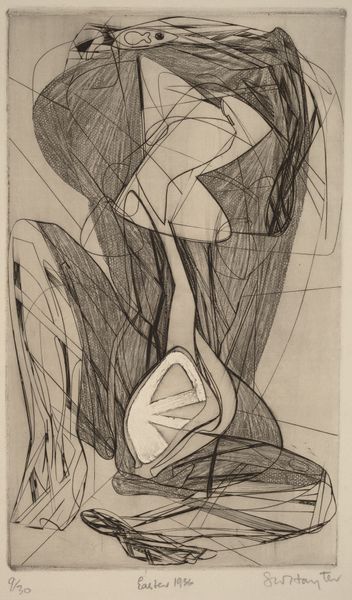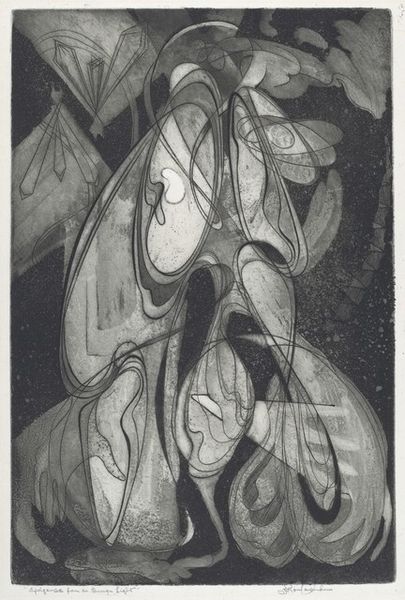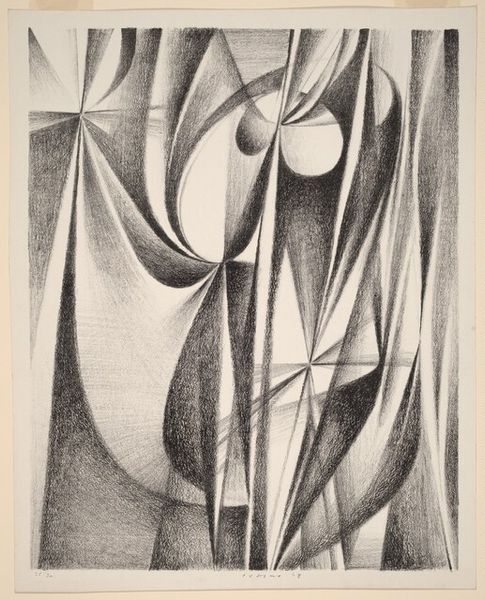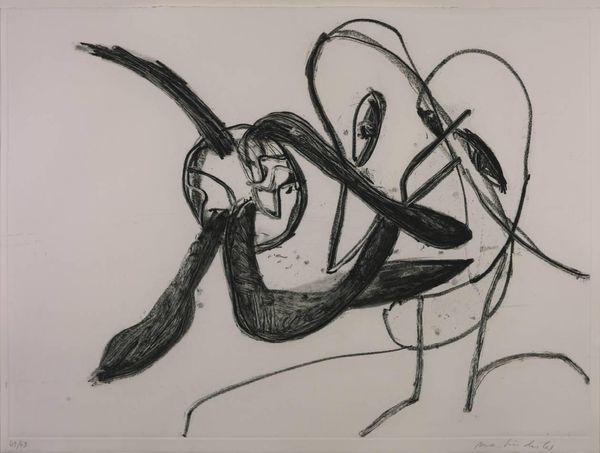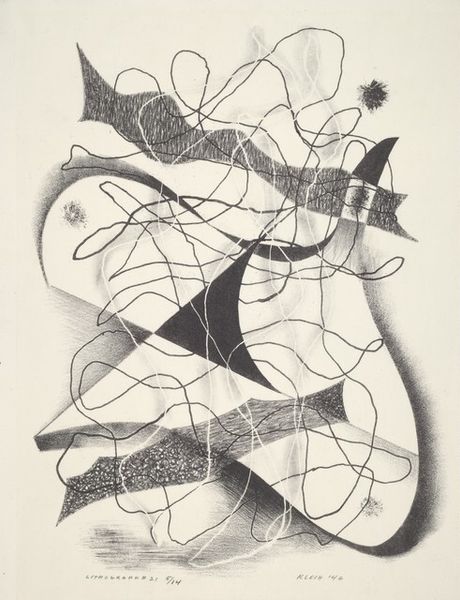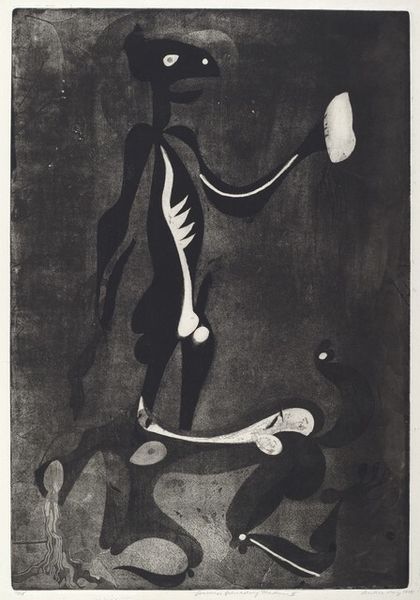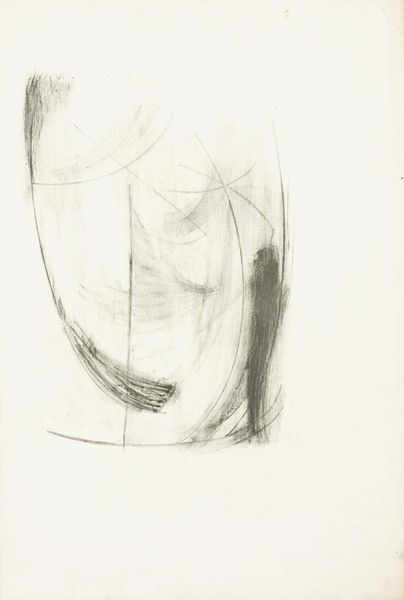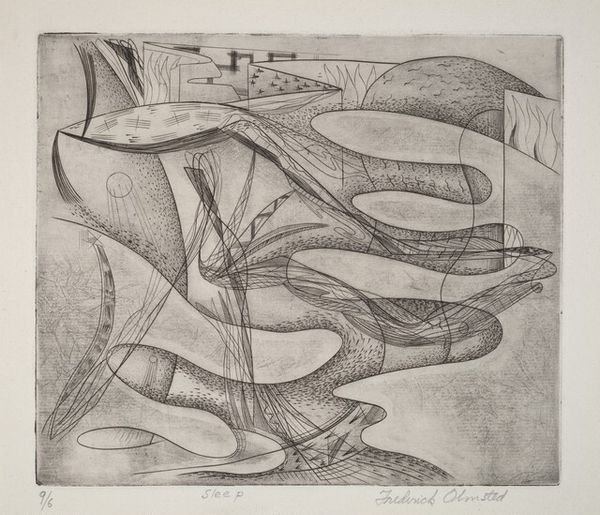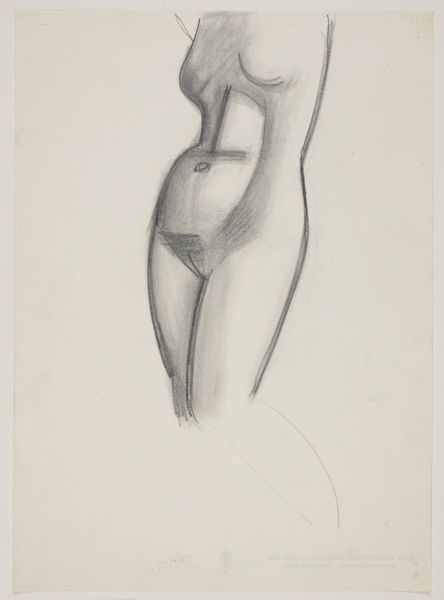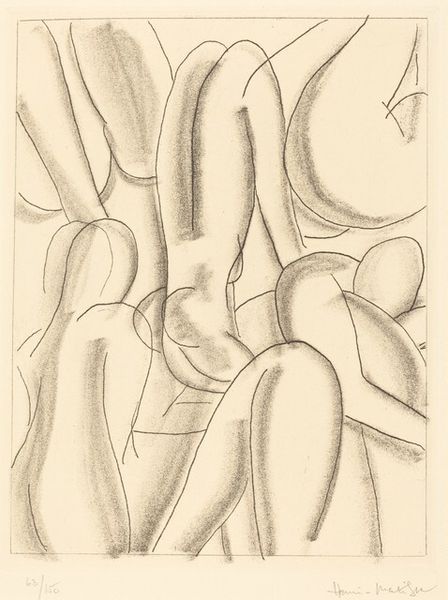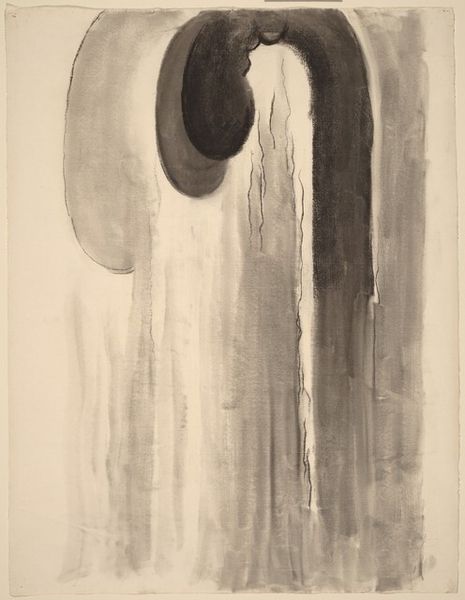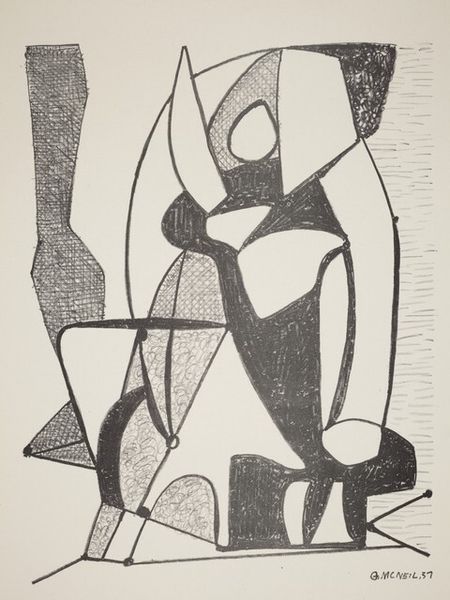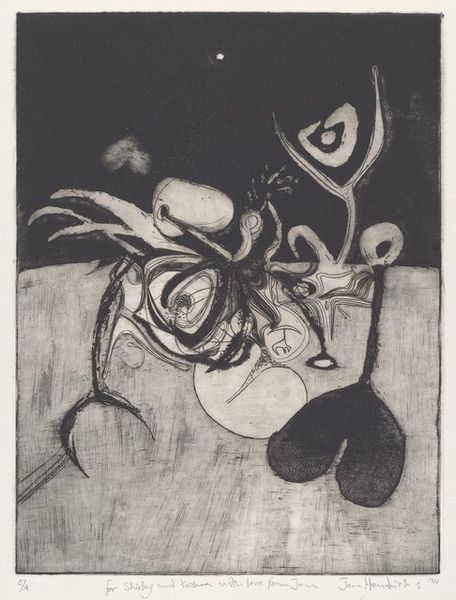
drawing, print, pencil, graphite
#
drawing
#
organic
# print
#
pencil sketch
#
figuration
#
pencil drawing
#
pencil
#
abstraction
#
graphite
#
portrait drawing
Dimensions: image: 260 x 177 mm sheet: 318 x 240 mm
Copyright: National Gallery of Art: CC0 1.0
Curator: Maybelle Stamper’s "Little Figure With Big Wings," a graphite and pencil drawing likely created between 1935 and 1943, presents us with a fascinating visual puzzle. Editor: My first thought? It’s strangely haunting. The monochromatic palette and abstracted forms give it an almost dreamlike quality. There’s an unsettling, isolated feeling emanating from that central figure. Curator: Absolutely. The interplay of positive and negative space is striking. Note how the dark, bold lines frame the more delicately rendered central figure. It creates a tension that’s both visually arresting and intellectually stimulating. Also the balance between organic shapes, like those suggesting wings, and more geometric forms generates significant tension within the piece. Editor: And the figure itself—trapped, perhaps? Is that really supposed to look like an Angel, given it is imprisoned within this tear drop shaped boundary by its massive wing configuration? Consider the era—the anxieties of the Depression, the looming war… the "little figure" could represent vulnerability in the face of overwhelming forces. Curator: A compelling interpretation. However, from a purely formal perspective, the drawing invites contemplation on the very nature of representation. What is a figure? What constitutes a wing? Stamper plays with these concepts, pushing the boundaries of abstraction. Editor: But abstraction isn’t devoid of meaning. Stamper, as a woman artist working in a period of great social upheaval, could be using abstraction to subvert traditional representation, to find a new visual language for expressing marginalized experiences. The lack of definitive form echoes the lack of defined roles society offered women in that period. Curator: An insightful point about the constraints of representation. Looking closely at Stamper's technique, we see a masterful control of graphite. The subtle gradations of tone create depth and volume, while the sharp, incisive lines define the key elements of the composition. Editor: It really draws you in, doesn't it? You keep searching for something concrete to latch onto, but the image resists easy answers. Curator: Precisely! It's this ambiguity that makes it such a compelling work of art. Its very strength comes from being able to present visual questions, rather than definite answers. Editor: Exactly—it is up to us, as viewers, to create context. And the fact that those contexts shift over time makes this a piece of artwork of durable relevance.
Comments
No comments
Be the first to comment and join the conversation on the ultimate creative platform.
